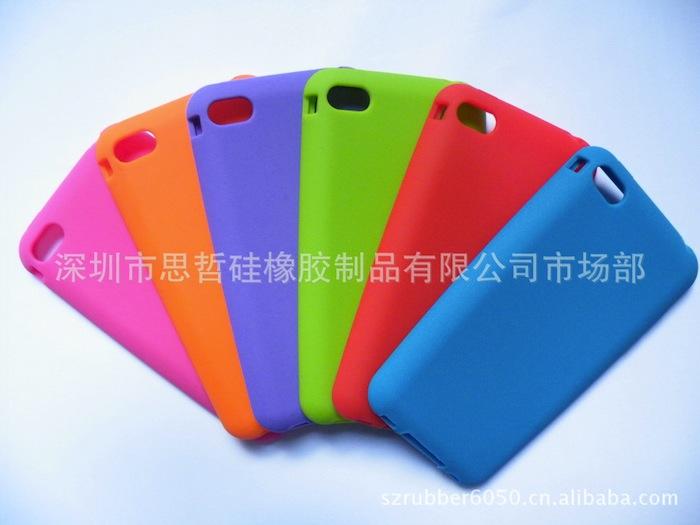Aluminum unibody iPhone 5, low-cost iPhone 4S seen propelling Apple's sales
The two anticipated new iPhone models are expected by analyst Chris Whitmore with Deutsche Bank to push Apple's smartphone sales even higher. He sees the so-called "iPhone 4S" as a handset with a bill-of-material cost lower than $150, allowing Apple to sell it for between $300 and $350 without a carrier subsidy.
Whitmore sees a low-cost iPhone giving Apple even greater market penetration into the midrange smartphone market, where he estimates there are about 1 billion prepaid customers. Such a move would "drastically expand" the addressable smartphone market for Apple, he believes.
The anticipated iPhone 4S is viewed as essentially an 8GB iPod touch with an added cellular antenna. Whitmore believes such a device could achieve margins of around 50 percent, if it were to be sold for more than $300. He noted the current 8GB iPod touch, which sells for $229, has margins of about 38 percent.
In his note to investors on Monday, Whitmore also made brief mention of Apple's fifth-generation iPhone, which he expects will be a completely redesigned handset. Specifically, he said he expects the device to have an aluminum unibody construction to replace the current glass back of the iPhone 4.
In addition, Whitmore also believes that the so-called "iPhone 5" will sport a better camera and a slightly larger screen size. Various rumors have suggested the next handset will have an 8-megapixel camera along with an edge-to-edge screen.
Claims that Apple's next iPhone will sport an aluminum back first surfaced in March, when it was said that ditching glass could allow the handset to be even lighter. It was claimed again in August that Apple's iPhone 5 will sport a "metal chassis" replacing the reinforced glass on the back of the iPhone 4.
Leading up to an anticipated iPhone announcement from Apple, a number of alleged parts have leaked from the company's overseas supply chain showing a handset largely similar to the iPhone 4. Some reports have claimed that these are for Apple's new low-cost iPhone 4S, while others have said the iPhone 5 will look largely the same as the current model.
Though no components showing a drastically redesigned iPhone 5 have appeared, a number of third-party cases have shown a redesigned iPhone with curved sides leading to a flat back. In addition, The New York Times has claimed that the iPhone 5 will sport a "fairly different" look on the outside.
 Neil Hughes
Neil Hughes














 Amber Neely
Amber Neely
 Thomas Sibilly
Thomas Sibilly
 AppleInsider Staff
AppleInsider Staff
 William Gallagher
William Gallagher
 Malcolm Owen
Malcolm Owen
 Christine McKee
Christine McKee










65 Comments
This should be the first release of their exclusive contract with a certain CalTech Materials Science Firm.
Looks like LiquidMetal cleaned up their website.
http://www.liquidmetal.com/
Used to be quite a pile.
This should be the first release of their exclusive contract with a certain CalTech Materials Science Firm.
Looks like LiquidMetal cleaned up their website.
http://www.liquidmetal.com/
Used to be quite a pile.
I have been wondering when Apple would start using this. The arguments previously raged here on AI over the strength to weight ratios of a unibody aluminum design versus liquidmetal can start over
Will all of the antennas have to be external with an aluminum unibody? 4 for wireless communication, and GPS too?
I will be happy if Apple does use a strong and lightweight metal body on the iPhone 5. I have been using my Samsung Focus since I sold my iPhone 3GS (my contract is up and I don't want an iPhone 4). At first I wasn't happy with the weight of the Focus, but after a few weeks of day-to-day usage (versus as a back up GoPhone) I really like the lighter weight. If Apple can come close to matching that weight, but with a metal enclosure I will be a happy camper. The iPhone 4 is nice to look at, but the sharp edges and extra weight are really a turn off. \
Will all of the antennas have to be external with an aluminum unibody? 4 for wireless communication, and GPS too?
I was just reading the FAQ on the Liquidmetal web site to see about that. It is non-magnetic and a poor conductor but I have not seen any information regarding its radio frequency blocking properties. Any physicists here to answer that? It is a Zr/Ti based alloy.